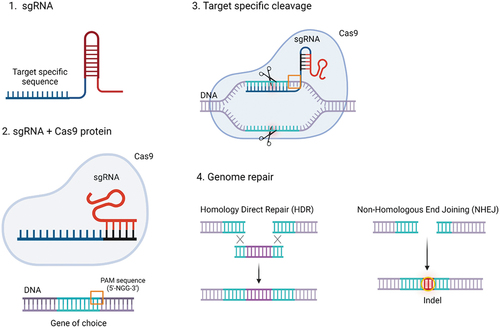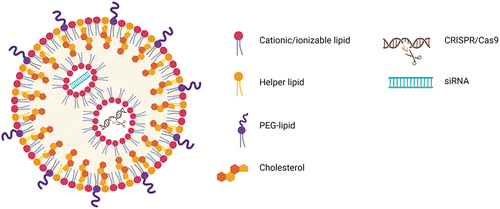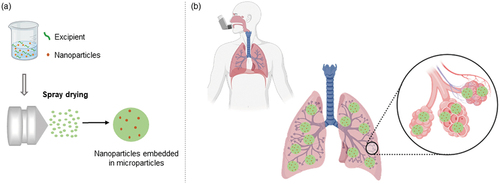Figures & data
Table 1. Summary of studies developing CRISPR-Cas9-loaded LNPs, the main delivery target, and the administration route.
Table 2. Examples of successful inhalable nucleic acid-based NEMs.



